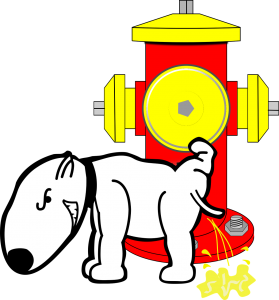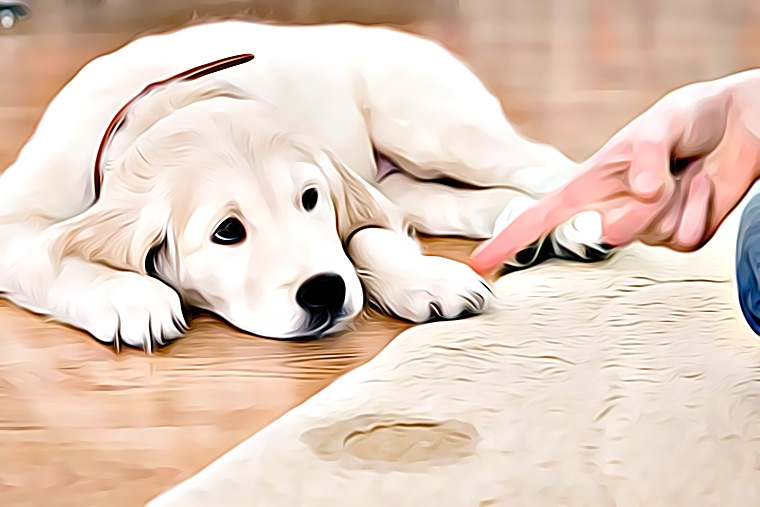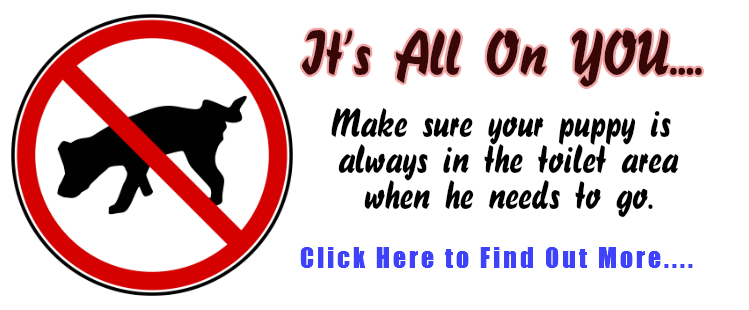Litterbox Training A Puppy
Litter box training a puppy may seem a daunting task at first. However, once you create a daily routine for your puppy from the start, he will be more comfortable using it when nature calls.
Some dog owners train their pets to eliminate outside; however, there are times when you can’t let him out, or you live in an apartment.
Training your canine companion to discharge in his personal potty is convenient for you and your pet.

Getting The Right Equipment
Before taking steps to litter your train your puppy, make sure that you have the right equipment fist. All you need is something to contain the litter; a large plastic tub will suffice. You can purchase a more expensive tray that offers a self-cleaning function or one with a waste collecting system.
The right receptacle will have the following criteria:
- 1 It will be big enough for your puppy to turn around in.
- 2 The sides must be low enough for your pup to enter by himself but high enough to prevent him from peeing out of the tray if he lifts the leg.
You must provide litter for the container as they have more absorbent pellets. Dog litter varies from regular clay to odor-controlling activated charcoal. You can create your own odor neutralizer by sprinkling a handful of baking soda on the bottom of the container each time before filling it.
Whatever you choose to use, don’t use crystals, clumping, or any cat litter unless it’s completely natural. Ensure whatever you use to absorb your dog’s waste is 100% safe.
You will need a scoop, gloves, and a step-on trashcan to remove your pup’s waste each time he eliminates in his potty. Having the right equipment to hand makes this process easier.
Pet stain remover is useful, along with lots of rags. Pet stain remover is better to use than generic household cleaner because it neutralizes nasty pet smells rather than eliminating them, which discourages your canine from doing his business in is allocation.

Choosing The Right Spot
It would help if you positioned the potty in an accessible spot that also offers your pooch some privacy. Consider placing the container in areas where he spends most of his time.
Ensure you consider the following precautions:
- Do not put the tray near your puppy’s food and water, as it discourages most pets from eliminating where they eat.
- Dogs tend to dig in their receptacle at the start of their training. You should place it in an area that won’t get too messy if any waste gets thrown out. Some dog owners put plastic paneling around the receptacle to keep the area tidy.
Getting Started
Once you have the right container with dog-safe litter, picked the area, and have all the necessary equipment to hand, you must familiarize your pet with the box by showing it to him. Study the following seven steps in litter training your four-legged friend:
- Your puppy must learn to go in the tray, by himself, on command before he learns to eliminate. Show him that it’s safe and fun. Do this by putting your pup in the container, giving the command “use the box,” and praising him for being there.
- Whenever your puppy leaves, put him back in. Repeat the command, offer praise, and show you appreciate him being in his box. Continue practicing until you can guide him inside while giving the command. Your puppy may enter when you say “use the box,” continue practicing until he gets in straight away on command, never forgetting to praise him.
- When your puppy pees where it’s forbidden, soak up the urine with paper, or take some of your dog’s poo and put it in the tray. This demonstrates that it’s okay to go potty there, encouraging him to go there when nature calls.
- Look out for clear signs that your pooch needs to eliminate, such as pacing, sniffing around, whining, or walking to the door, and send him to the container immediately. Say aloud, ” use the box,” this command should be used consistently to avoid accidents. Very young puppies should be brought every hour, in addition to after meals and naps. Puppies should be sent to the box first thing in the morning before you go to bed and before being left alone. By the time your little doggy is four months old, he should make it through the night without needing to pee.
- Make sure you never chastise your pal for accidents, as that will have a counterproductive effect. Shouting at your dog will only frighten him and make it will delay his progress. Consistency is the only way to train him. If you catch him in the middle of an accident, clap sharply to startle him; this should make him stop. Run with him to the litter box, reward him if he expels.
- Be sure to feed your pup on a regular schedule as this will lead to him eliminating at standard times.
- Watch your puppy closely to avoid accidents; you don’t want him getting used to doing his business in the house. Get familiar with the signs that he needs to go pee or poo.
Final Thoughts
During potty training, reward your four-legged when he uses it for its intended purpose. You should always accompany him and reward him with treats, a toy, and consistently praise. As previously mentioned, do not be harsh with your pet when he has an accident; being patient yet consistent will always work better for your little learner than yelling or belittling.
By all means, your dog should not get used to peeing or pooing where he pleases. Clapping loudly should get him to stop and then get him to the box quickly.
It would help if you cleaned out the tray every time your dog uses it as they don’t bury their waste like cats. Scoop out poo each time, and at least once a month, empty the box and clean it. Once your doggy goes himself without prompting, it’ll be worth all your effort.

Leave a Reply